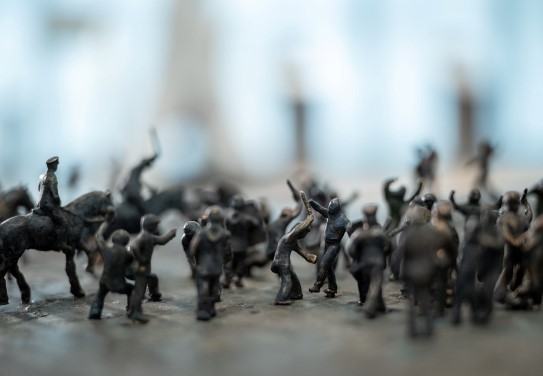Små monumenter (natt til 1. mai 1978)

Transcription
Lars Sandås:
People despised the drug addicts. They looked down on them and thought that they were feeble and creepy. Basically, that they were garbage.
Narrator:
You are listening to the artist Lars Sandås. For many years, people in Oslo’s outdoor drug scene have encountered a lot of opposition from the police. In the 1970s, some people in this scene found a hang-out at Nisseberget, an area of the park in front of the royal palace, but eventually the authorities had had enough. In 1978, on the eve of the first of May, the police took action — they were going to break up the scene and get rid of the drug users. But this turned out to be more difficult than the police expected, as Sandås explains.
Lars Sandås:
Things escalated and the police went in with greater force, and then activists and squatters joined in on the side of the drug users, and it developed into a kind of street battle. There was tear gas all the way down Oslo’s main street, Karl Johan, people were being trampled by police horses, a police car was overturned, things were damaged. And yes, several sources suggest that the police behaved very brutally.
Narrator:
Since that time, there have been many times when the police have moved drug users on from the places where they tend to hang out around the city.
Lars Sandås:
And so these people have felt unwanted, they’ve felt that they’re being pursued, and they’ve had very little in the way of legal protection. The situation has had a really serious impact on these people’s lives. And of course a large part of this story is about how thousands of people have died. But in addition, there’s something about how this story itself is being eradicated. Once this drug scene gets evicted from Oslo and it becomes impossible for it to return, then all traces of how these people were there, and made their mark on the city, will disappear.
Narrator:
As a commentary on this situation, Lars Sandås has created a work titled Small Monuments. Three sculptures to help us to remember people who have existed, and still exist, around us in the city; people living on the margins of society. The sculpture you see here depicts the street battles that Sandås referred to earlier. Sandås has also made a stone plinth that stands on the plaza outside Oslo Central Station, where members of the city’s drug scene hung out 20 years ago, and a bench by the Akerselva River, where glue sniffers hung out in the nineteen-eighties and -nineties.
Lars Sandås:
And so outsiderness is a kind of recurring theme in the whole of this project. Because for people who were part of the visible drug scene in Oslo, or at least how it was before, there was no one who spoke up for them and they went unheard. So clearly it’s all about justice. Why should one group of people not have the same rights as others? It’s a shame that there’s been so much of this kind of thing.